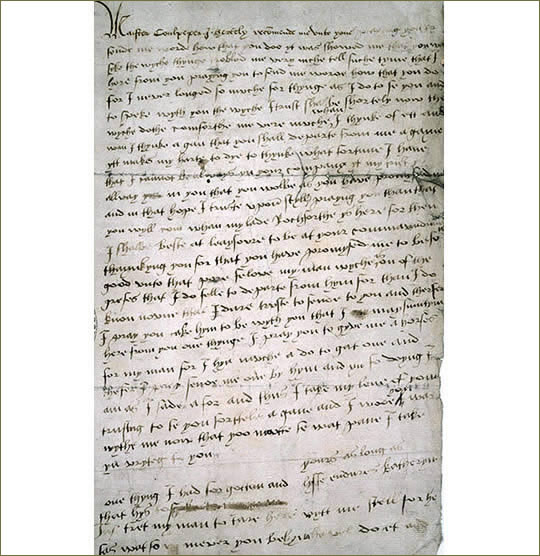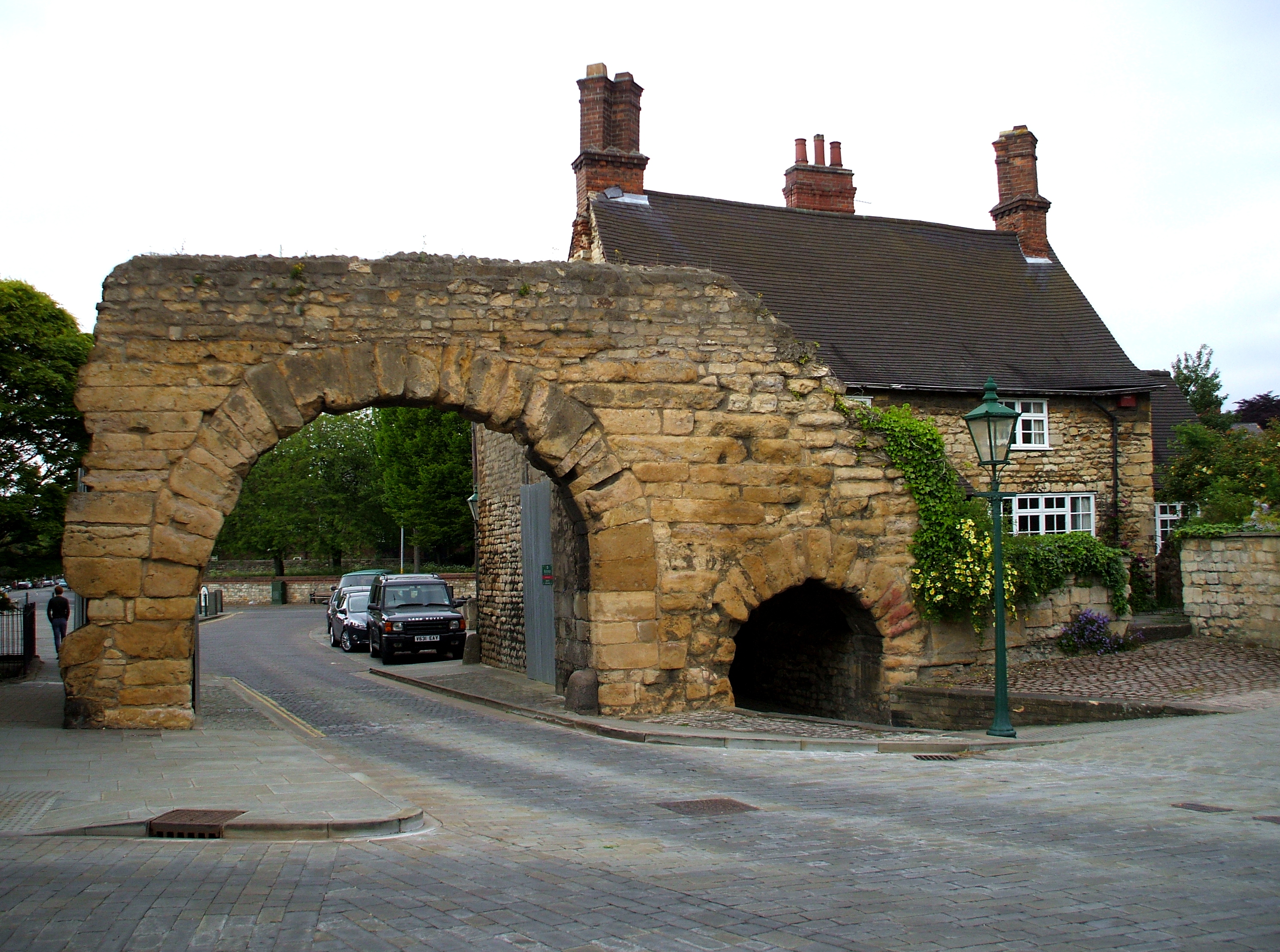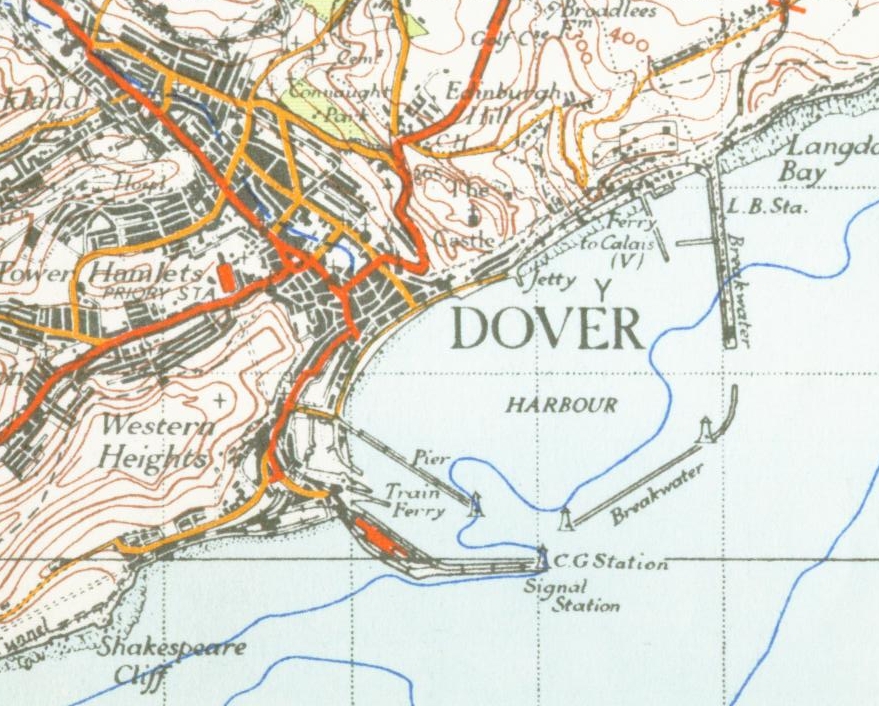|
Thomas Culpeper
Thomas Culpeper ( – 10 December 1541) was an English courtier and close friend of Henry VIII, and was related to two of his queens, Anne Boleyn and Catherine Howard. He is known to have had many private meetings with Catherine during her marriage, though these may have involved political intrigue rather than sex. A letter to him was found, written by Queen Catherine and signed, "Yours as long as life endures." Accused of adultery with Henry's young consort, Culpeper denied it and blamed the Queen for the situation, saying that he had tried to end his friendship with her, but that she was "dying of love for him". Eventually, Culpeper admitted that he intended to sleep with the queen, though he never admitted to having actually done so. Early life Thomas Culpeper was the second of the three sons of Alexander Culpeper (d. 1541) of Bedgebury in Kent, and his second wife, Constance Harper. His elder brother, also named Thomas, was a client of Thomas Cromwell.Retha M. Warnick ... [...More Info...] [...Related Items...] OR: [Wikipedia] [Google] [Baidu] |
Courtier
A courtier () is a person who attends the royal court of a monarch or other royalty. The earliest historical examples of courtiers were part of the retinues of rulers. Historically the court was the centre of government as well as the official residence of the monarch, and the social and political life were often completely mixed together. Background Monarchs very often expected the more important nobles to spend much of the year in attendance on them at court. Not all courtiers were noble, as they included clergy, soldiers, clerks, secretaries, agents and middlemen with business at court. All those who held a court appointment could be called courtiers but not all courtiers held positions at court. Those personal favourites without business around the monarch, sometimes called the camarilla, were also considered courtiers. As social divisions became more rigid, a divide, barely present in Antiquity or the Middle Ages, opened between menial servants and other classes at c ... [...More Info...] [...Related Items...] OR: [Wikipedia] [Google] [Baidu] |
Anne Of Cleves
Anne of Cleves (; 28 June or 22 September 1515 – 16 July 1557) was List of English royal consorts, Queen of England from 6 January to 12 July 1540 as the Wives of Henry VIII, fourth wife of Henry VIII. Little is known about Anne before 1527, when she became betrothed to Francis I, Duke of Lorraine, Francis, Duke of Bar, son and heir of Antoine, Duke of Lorraine, although their marriage did not proceed. In March 1539, negotiations for Anne's marriage to Henry began. Henry believed he needed to form a political alliance with her brother, William, Duke of Jülich-Cleves-Berg, William, a leader of the Protestants of Western Germany, to strengthen his position against potential attacks from Catholic Kingdom of France, France and the Holy Roman Empire. Anne arrived in England in December 1539 and married Henry a week later, but the marriage was declared unconsummated after six months and Anne was not crowned queen consort. Following the annulment, Henry gave her a generous settleme ... [...More Info...] [...Related Items...] OR: [Wikipedia] [Google] [Baidu] |
Edward VI Of England
Edward VI (12 October 1537 – 6 July 1553) was King of England and King of Ireland, Ireland from 28 January 1547 until his death in 1553. He was crowned on 20 February 1547 at the age of nine. The only surviving son of Henry VIII by his third wife, Jane Seymour, Edward was the first English monarch to be raised as a Protestant. During his reign, the realm was governed by a regency council because Edward never reached maturity. The council was first led by his uncle Edward Seymour, Duke of Somerset (1547–1549), and then by John Dudley, Duke of Northumberland (1550–1553). Edward's reign was marked by many economic problems and social unrest that in 1549 erupted into riot and rebellion. An expensive Rough Wooing, war with Kingdom of Scotland, Scotland, at first successful, ended with military withdrawal from Scotland and Boulogne-sur-Mer in exchange for peace. The transformation of the Church of England into a recognisably Protestant body also occurred under Edward, who too ... [...More Info...] [...Related Items...] OR: [Wikipedia] [Google] [Baidu] |
Pontefract Castle
Pontefract (or Pomfret) Castle is a castle ruin in the town of Pontefract, in West Yorkshire, England. King Richard II of England, Richard II is thought to have died there. It was the site of a series of famous sieges during the 17th-century English Civil War. History The castle, on a rock to the east of the town above All Saints' Church, was constructed in approximately 1070 by Ilbert de Lacy on land which had been granted to him by William the Conqueror as a reward for his support during the Norman Conquest. There is, however, evidence of earlier occupation of the site. Initially the castle was a wooden structure which was replaced with stone over time. The Domesday Survey of 1086 recorded "Ilbert's Castle" which probably referred to Pontefract Castle. Robert de Lacy failed to support King Henry I of England, Henry I during his power struggle with his brother, and the King confiscated the castle from the family during the 12th century. Roger de Lacy (1170–1211 ... [...More Info...] [...Related Items...] OR: [Wikipedia] [Google] [Baidu] |
Lincoln, England
Lincoln () is a cathedral city and non-metropolitan district, district in Lincolnshire, England, of which it is the county town. In the 2021 Census, the city's district had a population of 103,813. The 2021 census gave the Lincoln Urban Area, urban area of Lincoln, including Bracebridge Heath, North Hykeham, South Hykeham and Waddington, Lincolnshire, Waddington, a recorded population of 127,540. Roman Britain, Roman ''Lindum Colonia'' developed from an Iron Age settlement of Celtic Britons, Britons on the River Witham, near the Fosse Way road. Over time its name was shortened to Lincoln, after successive settlements, including by Anglo-Saxons and Danes (tribe), Danes. Landmarks include Lincoln Cathedral (English Gothic architecture; for over 200 years the world's tallest building) and the 11th-century Norman architecture, Norman Lincoln Castle. The city hosts the University of Lincoln, Bishop Grosseteste University, Lincoln City F.C. and Lincoln United F.C. Lincoln is the large ... [...More Info...] [...Related Items...] OR: [Wikipedia] [Google] [Baidu] |
James V Of Scotland
James V (10 April 1512 – 14 December 1542) was List of Scottish monarchs, King of Scotland from 9 September 1513 until his death in 1542. He was crowned on 21 September 1513 at the age of seventeen months. James was the son of King James IV and Margaret Tudor, daughter of Henry VII of England. During his childhood Kingdom of Scotland, Scotland was governed by regents, firstly by his mother until she remarried, and then by his first cousin once removed, John Stewart, Duke of Albany. James's personal rule began in 1528 when he finally escaped the custody of his stepfather, Archibald Douglas, 6th Earl of Angus. His first action was to exile Angus and confiscate the lands of the Clan Douglas, Douglases. James greatly increased his income by tightening control over royal estates and from the profits of justice, customs and feudal rights. He founded the College of Justice in 1532 and also acted to end lawlessness and rebellion in the Anglo-Scottish border, Borders and the Hebrides. ... [...More Info...] [...Related Items...] OR: [Wikipedia] [Google] [Baidu] |
Royal Progress
The ceremonies and festivities accompanying a formal entry by a ruler or their representative into a city in the Middle Ages and early modern period in Europe were known as the royal entry, triumphal entry, or Joyous Entry. The entry centred on a procession carrying the entering ruler into the city, where they were greeted and paid appropriate homage by the civic authorities, followed by a feast and other celebrations. The entry began as a gesture of loyalty and fealty by a city to the ruler, with its origins in the '' adventus'' celebrated for Roman emperors, which were formal entries far more frequent than triumphs. The first visit by a new ruler was normally the occasion, or the first visit with a new spouse. For the capital they often merged with the coronation festivities, and for provincial cities they replaced it, sometimes as part of a Royal Progress, or tour of major cities in a realm. The concept of itinerant court is related to this. From the Late Middle Ages, entrie ... [...More Info...] [...Related Items...] OR: [Wikipedia] [Google] [Baidu] |
Greenwich
Greenwich ( , , ) is an List of areas of London, area in south-east London, England, within the Ceremonial counties of England, ceremonial county of Greater London, east-south-east of Charing Cross. Greenwich is notable for its maritime history and for giving its name to the Prime meridian (Greenwich), Greenwich Meridian (0° longitude) and Greenwich Mean Time. The town became the site of a royal palace, the Palace of Placentia, from the 15th century and was the birthplace of many House of Tudor, Tudors, including Henry VIII of England, Henry VIII and Elizabeth I. The palace fell into disrepair during the English Civil War and was demolished, eventually being replaced by the Greenwich Hospital (London), Royal Naval Hospital for Sailors, designed by Sir Christopher Wren and his assistant Nicholas Hawksmoor. These buildings became the Old Royal Naval College, Royal Naval College in 1873, and they remained a military education establishment until 1998, when they passed into the ... [...More Info...] [...Related Items...] OR: [Wikipedia] [Google] [Baidu] |
Dover
Dover ( ) is a town and major ferry port in Kent, southeast England. It faces France across the Strait of Dover, the narrowest part of the English Channel at from Cap Gris Nez in France. It lies southeast of Canterbury and east of Maidstone. The town is the administrative centre of the Dover District and home of the Port of Dover. Archaeological finds have revealed that the area has always been a focus for peoples entering and leaving Great Britain, Britain. The name derives from the River Dour that flows through it. In recent times the town has undergone transformations with a high-speed rail link to London, new retail in town with St James' area opened in 2018, and a revamped promenade and beachfront. This followed in 2019, with a new 500m Pier to the west of the Harbour, and new Marina unveiled as part of a £330m investment in the area. It has also been a point of destination for many English Channel migrant crossings (2018-present), illegal migrant crossings. The Port ... [...More Info...] [...Related Items...] OR: [Wikipedia] [Google] [Baidu] |
Lady Rochford
Jane Boleyn, Viscountess Rochford (; – 13 February 1542) was an English noblewoman. Her husband, George Boleyn, Viscount Rochford, was the brother of Anne Boleyn, the second wife of King Henry VIII, and a cousin to King Henry VIII's fifth wife Catherine Howard, making Jane a cousin-in-law. Jane had been a member of the household of Henry's first wife, Catherine of Aragon. It is possible that she played a role in the verdicts against, and subsequent executions of, her husband and Anne Boleyn. She was later a lady-in-waiting to Henry's third and fourth wives, and then to his fifth wife, Catherine Howard, with whom she was executed. Early life Born Jane Parker, she was the daughter of Henry Parker, 10th Baron Morley, and Alice St. John, great-granddaughter of Margaret Beauchamp of Bletso. Through Margaret, Jane was a distant relation of King Henry VIII — specifically his half-second-cousin – and this, in turn, made her a second cousin once removed of all of the King's chi ... [...More Info...] [...Related Items...] OR: [Wikipedia] [Google] [Baidu] |
Wiltshire
Wiltshire (; abbreviated to Wilts) is a ceremonial county in South West England. It borders Gloucestershire to the north, Oxfordshire to the north-east, Berkshire to the east, Hampshire to the south-east, Dorset to the south, and Somerset to the west. The largest settlement is Swindon, and Trowbridge is the county town. The county has an area of and a population of 720,060. The county is mostly rural, and the centre and south-west are sparsely populated. After Swindon (183,638), the largest settlements are the city of Salisbury (41,820) and the towns of Chippenham (37,548) and Trowbridge (37,169). For local government purposes, the county comprises two unitary authority areas: Swindon and Wiltshire. Undulating chalk downlands characterize much of the county. In the east are Marlborough Downs, which contain Savernake Forest. To the south is the Vale of Pewsey, which separates the downs from Salisbury Plain in the centre of the county. The south-west is also downland, ... [...More Info...] [...Related Items...] OR: [Wikipedia] [Google] [Baidu] |









